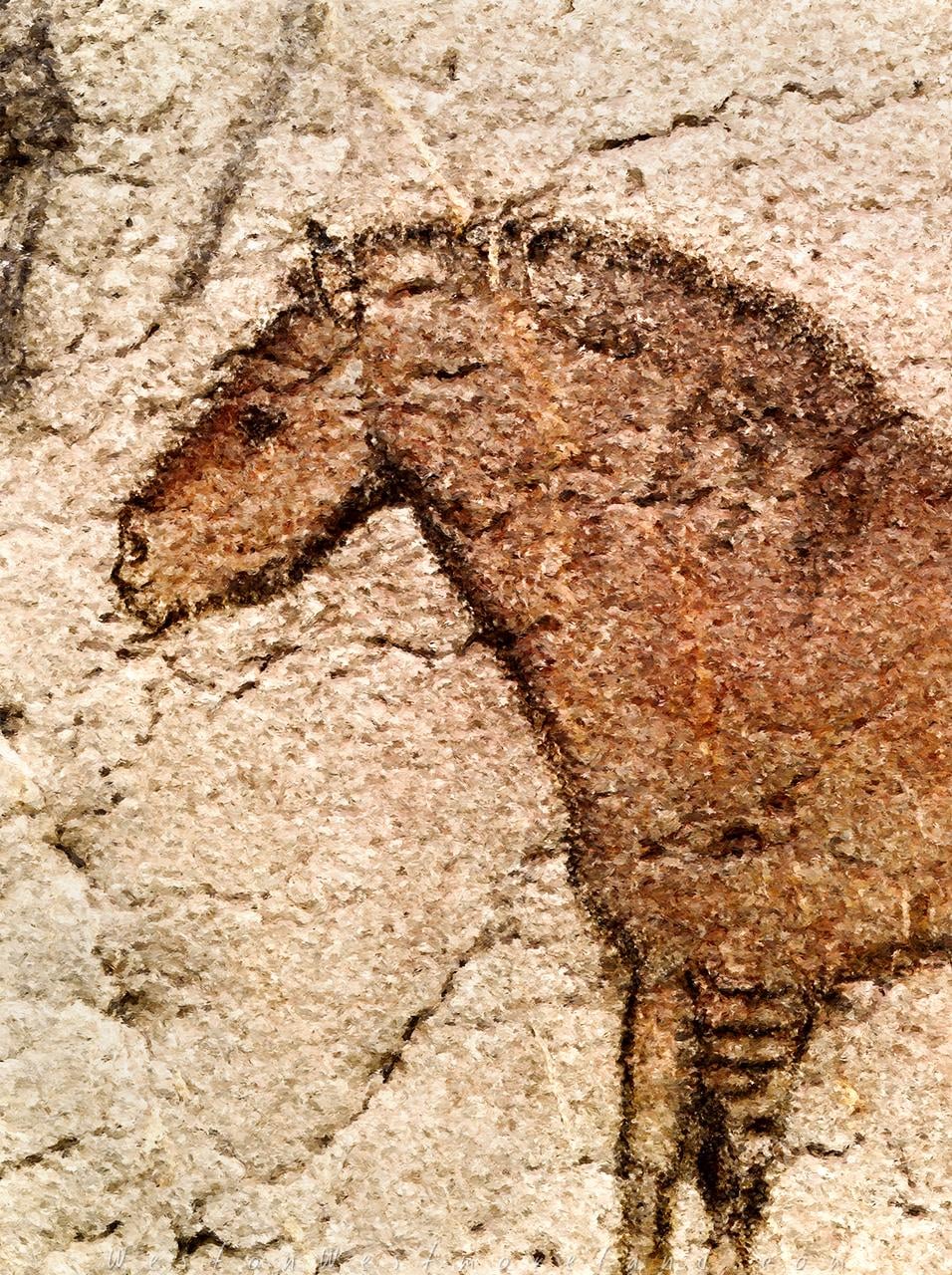
Paleolithic painted horse (detail) from Ekain Cave, Basque Country, Spain. The head and the dark stripes on withers, forearm and gaskin depict a Przewalski’s horse (Equus ferus przewalskii), a species that roamed Europe during the last glaciation. Also found in Lascaux cave and others… [1280×956]
by WestonWestmoreland

3 Comments
…showing some of the most exquisite paintings of horses you can find in any of the Paleolithic caves, the panel of the Horses in Ekain is considered one of the finest, and sets this less known cave among the greatest ever found, along with Altamira, Lascaux, Chauvet or Niaux.
Not as famous as the French caves due to a much lower degree of publicity and touristic exploitation, the Spanish caves of the Cantabrian Coast are many, and equal in richness and artistry to those in France. Altamira, known as *the Sistine Chapel of Cave Art* and the first ever found, was considered a fake at the time because nobody believed cavemen were capable of such delicate art.
Ekain, discovered in the sixties, has been kept preserved and inaccessible to the general public until a breathtaking new generation replica was opened a few years ago.
Przewalski’s horse is not extinct as many believe, but was on the verge of vanishing forever in the 20th century. It is nowadays an extremely endangered species trying to survive in a single reserve in Mongolia.
Most “wild” horses today, such as the American Mustang or the Australian Brumby, are actually feral horses descended from domesticated animals that escaped and adapted to life in the wild. In contrast, Przewalski’s horse, also known as takhi, has never been domesticated and remains the only truly wild horse in the world today.
As usual, my apologies for inaccuracies and comments.
Stunning.
https://en.wikipedia.org/wiki/Przewalski%27s_horse Not completely extinct